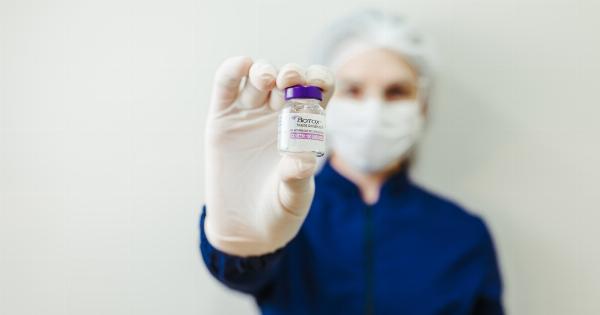Chemical peels are skin treatments that involve the application of various chemical solutions to the skin’s surface. This procedure aims to exfoliate and rejuvenate the skin, resulting in a smoother, brighter, and more youthful complexion.
Chemical peels are commonly used to address various skin concerns, such as wrinkles, fine lines, acne scars, hyperpigmentation, and uneven skin tone.
How Do Chemical Peels Work?
Chemical peels work by causing controlled damage to the outer layers of the skin. This triggers the body’s natural healing process, stimulating the production of new skin cells and the formation of collagen and elastin fibers.
The specific mechanism of action depends on the type and strength of the chemical solution used.
Types of Chemical Peels
There are different types of chemical peels available, each varying in depth and intensity. The three main categories of chemical peels are:.
1. Superficial or Light Peels
Superficial peels involve the use of mild acids, such as alpha hydroxy acids (AHAs) or fruit acids, to exfoliate the outermost layer of the skin. These peels are gentle and typically require no downtime.
They are generally used to improve skin texture, tone, and mild discoloration.
2. Medium Peels
Medium peels use stronger acids, such as trichloroacetic acid (TCA), to penetrate deeper into the skin. These peels target moderate skin imperfections, including deeper wrinkles, acne scars, and pigmentation issues.
Medium peels may require some downtime for the skin to heal and regenerate.
3. Deep Peels
Deep peels involve the use of very strong acid solutions, such as phenol, to deeply penetrate the skin. These peels are used for more severe skin conditions, such as deep wrinkles, scars, and significant pigmentation issues.
Deep peels typically require a more extended recovery period.
The Process of a Chemical Peel
A typical chemical peel procedure involves the following steps:.
1. Cleansing
The skin is thoroughly cleansed and prepared for the treatment. The use of soap or a gentle cleanser removes any dirt, oil, or makeup from the skin’s surface.
2. Application of Chemical Solution
The appropriate chemical solution is applied to the skin using a brush, sponge, or cotton pad. The solution is carefully spread onto the targeted area, ensuring even coverage.
3. Reaction Time
The chemical solution is left on the skin for a specific duration, determined by the type of peel and the desired results. During this time, the solution works to break down the bonds between dead skin cells and stimulate the regeneration process.
4. Neutralization
After the desired reaction time, the chemical solution is neutralized using a neutralizing agent or water. This stops the peeling process and prevents any further skin damage.
5. Post-Treatment Care
After the peel, the skin may appear red, sensitive, or slightly swollen. It is crucial to follow post-treatment instructions provided by the skincare professional.
This typically includes avoiding sun exposure, using a gentle cleanser and moisturizer, and applying sunscreen daily to protect the healing skin.
Benefits of Chemical Peels
Chemical peels offer numerous benefits for the skin, including:.
1. Improved Skin Texture
Chemical peels effectively exfoliate the skin’s surface, leading to improved texture, smoothness, and a more even skin tone.
2. Reduced Wrinkles and Fine Lines
By stimulating collagen production, chemical peels can help reduce the appearance of wrinkles and fine lines, giving the skin a more youthful and plump appearance.
3. Diminished Acne and Acne Scars
Salicylic acid peels, specifically designed for acne-prone skin, can help unclog pores, reduce breakouts, and fade acne scars.
4. Improved Hyperpigmentation
Chemical peels can effectively target and reduce the appearance of hyperpigmentation, including age spots, sunspots, and melasma.
5. Enhanced Product Absorption
By eliminating dead skin cells and debris, chemical peels enhance the penetration and efficacy of skincare products applied after the treatment, allowing for better absorption and results.
Risks and Considerations
While chemical peels are generally safe, there are certain risks and considerations to be aware of:.
1. Skin Sensitivity
Individuals with sensitive skin may be more prone to adverse reactions and should opt for milder peels or consult with a dermatologist before undergoing the procedure.
2. Skin Discoloration
Deep peels, especially those containing phenol, may carry a risk of skin discoloration, particularly in individuals with darker skin tones. Careful assessment and selection of appropriate peels are essential.
3. Sun Sensitivity
Chemical peels make the skin more sensitive to the sun. It is crucial to protect the skin with sunscreen and limit sun exposure following the treatment to avoid unwanted pigmentation issues.
4. Infection and Scarring
Poor aftercare or improper application of the chemical solution may increase the risk of infection or scarring. It is important to follow post-treatment instructions and have the procedure performed by a qualified professional.
Conclusion
Chemical peels are effective skincare treatments that can address various skin concerns and enhance overall skin health.
By exfoliating the skin’s surface, stimulating collagen production, and promoting new cell growth, chemical peels offer a wide range of benefits, including improved texture, reduced wrinkles, and diminished pigmentation issues. However, it is crucial to consider individual skin factors, follow proper aftercare, and consult with a skincare professional to ensure safe and optimal results.





























